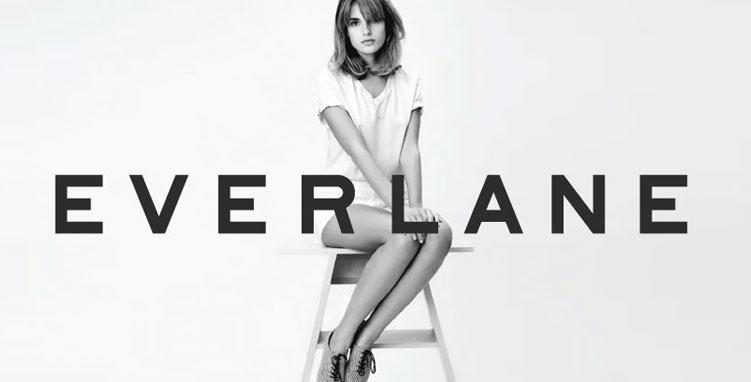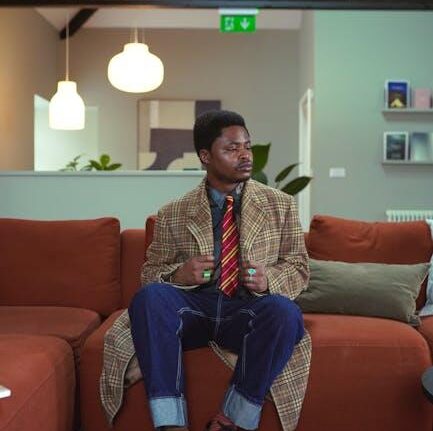In the ever-evolving landscape of fashion, the demand for sustainability has never been more pronounced. Consumers are increasingly seeking out brands that not only offer stylish essentials but also prioritize ethical practices and environmental obligation. Among the frontrunners in this movement are Everlane and Pact, two companies that have carved out their niches in the realm of lasting basics. Everlane, celebrated for its transparent pricing and minimalist aesthetics, contrasts with Pact’s commitment to organic materials and fair labor practices. As shoppers weigh their options,a compelling question arises: who’s leading the charge towards a more sustainable wardrobe? In this article,we’ll delve into the philosophies,practices,and product offerings of both brands to uncover how they stack up in the quest for sustainability in basics. Join us as we explore the intersections of style, ethics, and environmental consciousness in the battle of Everlane vs.Pact.
evaluating the Environmental Impact of Everlane and Pact
When it comes to evaluating the environmental impact of sustainable brands like Everlane and Pact,it’s essential to analyze several factors that play a critical role in their operations. Materials used in production are a important starting point. Everlane focuses on transparent sourcing, emphasizing the use of recycled materials and ethically sourced cotton. They employ a direct-to-consumer model that reduces carbon footprints associated with customary retail, yet they still utilize synthetic materials that may trigger concerns regarding biodegradability. In contrast, Pact commits entirely to organic cotton and fair trade practices, minimizing the use of harmful chemicals and promoting healthier soil ecosystems. This commitment to natural fibers helps reduce the impact of fast fashion and supports sustainable agriculture, aligning closely with eco-conscious consumer values.
Furthermore, manufacturing processes examine the energies consumed during production. Everlane prides itself on its commitment to clarity, revealing the factories it partners with, many of which maintain standards for energy efficiency and waste reduction. On the other hand, Pact leverages renewable energy in their manufacturing facilities, ensuring that their production footprint remains minimal.An additional layer is added when considering shipping practices; Everlane’s direct shipping can lead to shorter supply chains, but Pact emphasizes carbon-neutral shipping, showcasing their dedication to offsetting transportation emissions.Evaluating these elements allows consumers to distinguish which brand aligns best with their values regarding sustainability.

Unpacking Sustainable Practices: Transparency and ethics in Production
In the realm of sustainable fashion, transparency and ethical practices are as crucial as the materials used in production. Everlane, known for its ”radical transparency,” provides customers with a breakdown of costs associated with each item. They publicly disclose the prices, factory locations, and production processes, allowing consumers to make informed choices about their purchases. The brand emphasizes ethical factories, ensuring fair wages and safe working conditions for workers, which is integral to their brand ideology.In contrast, Pact also champions transparency but focuses more on the organic aspect of their materials. Their commitment to certified organic cotton and fair trade practices showcases their dedication to sustainability from the ground up,presenting a strong ethical stance in the eco-kind apparel market.
The differences in their strategies can be exemplified through their production choices and certifications. Everlane’s transparency allows consumers to understand how much they are paying for the workmanship involved, while Pact’s approach highlights the environmental impact of their fabrics. Both brands utilize eco-friendly materials, but their journey towards sustainability diverges in terms of ethics and transparency. Below is a comparison of key practices:
| Brand | Transparency | materials Used | ethical Certifications |
|---|---|---|---|
| Everlane | Breakdown of costs & factory info | Recycled poly,cashmere | Ethically sourced materials |
| Pact | Focus on organic certifications | Organic cotton & recycled materials | GOTS,Fair Trade |

Material Matters: Comparing Fabrics and Their Footprints
When evaluating the sustainability of materials used by Everlane and Pact, it’s essential to examine the fabrics that define their basics and the environmental impact associated with those choices. Everlane champions materials like tencel and recycled polyester, which are not only softer on the skin but also produced using less water and energy compared to traditional fabrics. In contrast, Pact focuses on organic cotton and hemp, which are grown without harmful pesticides and require significantly less water, promoting healthier ecosystems. Each brand showcases a commitment to sustainability, but their material choices offer diffrent benefits to both the consumer and the planet.
The manufacturing processes behind these fabrics further underline the brands’ positions in the sustainability landscape. For instance, Everlane prioritizes transparent sourcing, ensuring that their factories adhere to ethical labor practices while minimizing waste through a lean production model. On the other hand,Pact emphasizes a closed-loop system,which means their production processes facilitate recycling and reusability,ultimately reducing their carbon footprint. A comparison of their fabric choices can be summarized in the table below, highlighting the unique attributes and ecological impacts of each brand’s primary materials:
| Fabric Type | Source | Environmental Impact |
|---|---|---|
| Organic Cotton | Pact | Reduced water usage, no synthetic pesticides |
| Tencel | Everlane | Biodegradable, low energy consumption |
| Recycled Polyester | Everlane | Less plastic waste, requires less water |
| hemp | Pact | Soil restoration, minimal water needs |

Consumer Perspective: Pricing, Style, and Brand Loyalty in sustainable Fashion
when evaluating sustainable fashion brands like Everlane and Pact, consumer perspective often hinges on several pivotal factors, including pricing, style, and brand loyalty. everlane positions itself as a premium brand, appealing to consumers willing to invest more for perceived quality and transparency. their commitment to ethical production and sustainable materials resonates well with environmentally-conscious shoppers, but it comes at a higher price point. Conversely, Pact offers an attractive option for budget-minded shoppers who prioritize sustainability without compromising on quality. Their focus on organic cotton and equitable labor practices makes them a favorite for those seeking affordability combined with ethical values.
Style also plays a significant role in fashion choices, with each brand carving out its niche.Everlane’s minimalist designs often attract a stylish demographic, featuring timeless pieces that can seamlessly fit into a modern wardrobe. In contrast, Pact leans more towards comfort and functionality, offering vibrant colors and playful designs that appeal to families and casual wearers. As consumers become more aware of the environmental implications of their buying habits, brand loyalty shifts: Everlane may attract those looking to make a fashion statement with ethical undertones, while Pact builds a loyal customer base through its commitment to accessible sustainability. Understanding these nuances helps consumers make informed decisions aligned with their personal values and lifestyle needs.
Insights and Conclusions
As we draw the curtain on our exploration of everlane and Pact, it’s clear that both brands champion the cause of sustainability in their own unique ways. Everlane’s commitment to transparency and ethical manufacturing processes has garnered a loyal following, while pact’s emphasis on organic materials and fair trade practices sets it apart in the realm of eco-conscious fashion.
In this evolving landscape of sustainable basics, your choice may ultimately hinge on personal priorities—be it materials, manufacturing ethics, or the brand’s approach to social responsibility. Beyond just clothing,both Everlane and Pact represent a growing movement towards mindful consumption,urging us to think critically about our choices and their impact on the planet.
As consumers,we hold the power to reshape the industry by supporting brands that align with our values. Whether you’re drawn to the minimalist aesthetic of Everlane or the soft comfort of Pact, you’re participating in a conversation about sustainability that is more important than ever. it’s not just about who leads but how we collectively pave the way for a more responsible future in fashion. Happy shopping!








Leave feedback about this